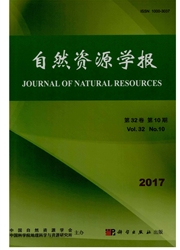

 中文摘要:
中文摘要:
论文利用781个采样站点的降水数据(中国大陆729个气象台站1951—2002年间月降水观测数据、台湾地区25个站点1971—2000年年均降水数据、世界"雨极"乞拉朋齐年均降水量以及中国西部增设的26个虚拟站点模拟数据),选取有效的敏感性解析因子经纬度、高程、坡向修正系数与地形开阔度等,建立累年平均降水与相关解析因子之间的多元回归方程(降水总体趋势)。并对于回归拟合后与局部变化有关的"随机指示项",采用HASM算法进一步插值处理。模型充分考虑其他地理环境因子的影响,在采样点稀疏区域使用虚拟站点辅助模拟,克服了传统模拟方法完全依赖观测站点实测资料,在站点稀疏区域等雨量线走向主观性的缺点;模型模拟结果既突出空间分布的总体趋势,也反映局地细节变化。
 英文摘要:
英文摘要:
Based on the precipitation data from 781 sampling points(755 meteorological stations and 26 suppositional stations) in the study area,the formulae used to estimate the annual mean precipitation have been obtained,and the characteristics of the geographic or topographic effects have been presented.The impact factors included longitude,latitude,elevation,terrain aspect and unobstructed factor are significant factors explaining annual mean precipitation spatial variability in China.Detrending of annual precipitation distribution,the residual anomaly for local change was simulated by HASM algorithm.Setting suppositional meteorological stations over regions with no measured data,a new method enabled us to estimate precipitation in regions with sparse measured sites.The results show that the estimated annual precipitation correctly replicates real spatial distribution of precipitation qualitatively and quantitatively.
 同期刊论文项目
同期刊论文项目
 同项目期刊论文
同项目期刊论文
 An Adaptive Method of High Accuracy Surface Modeling and Its Application to Simulating Elevation Sur
An Adaptive Method of High Accuracy Surface Modeling and Its Application to Simulating Elevation Sur 期刊信息
期刊信息
